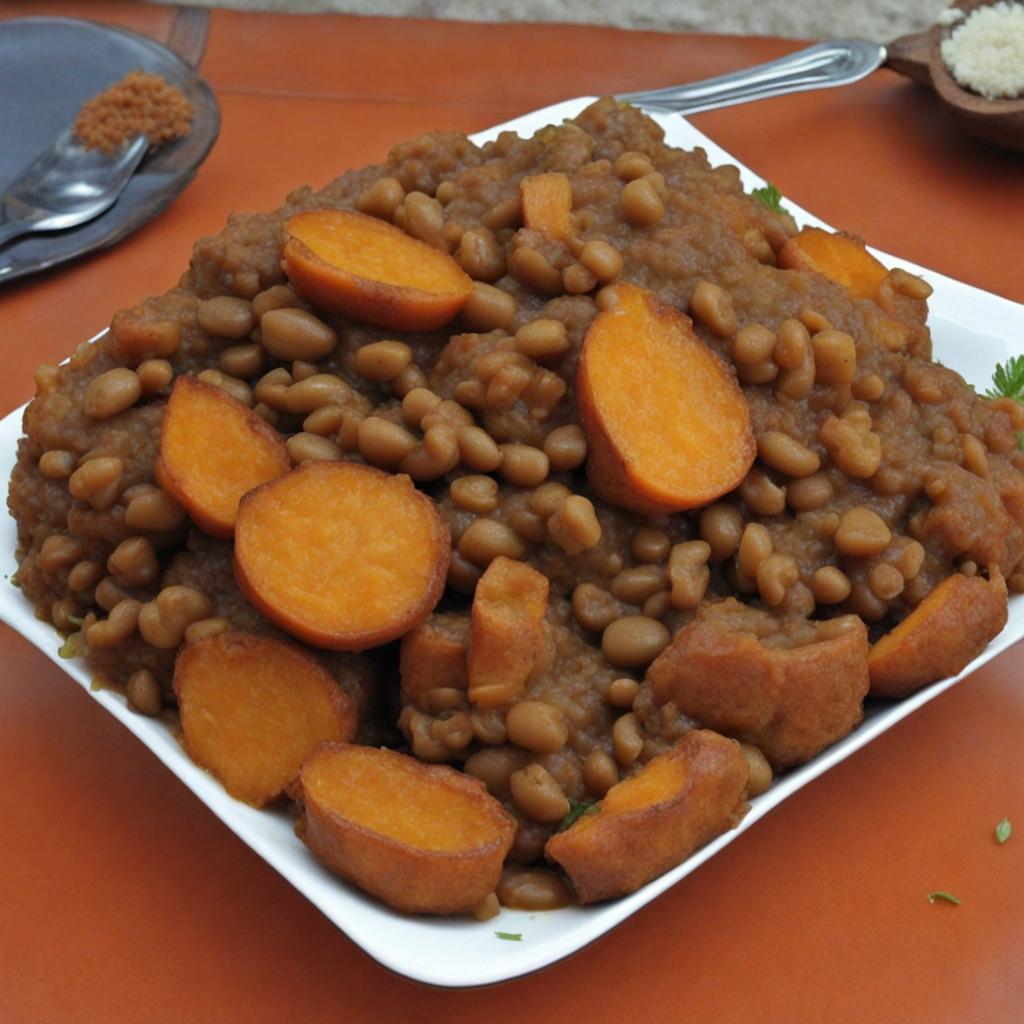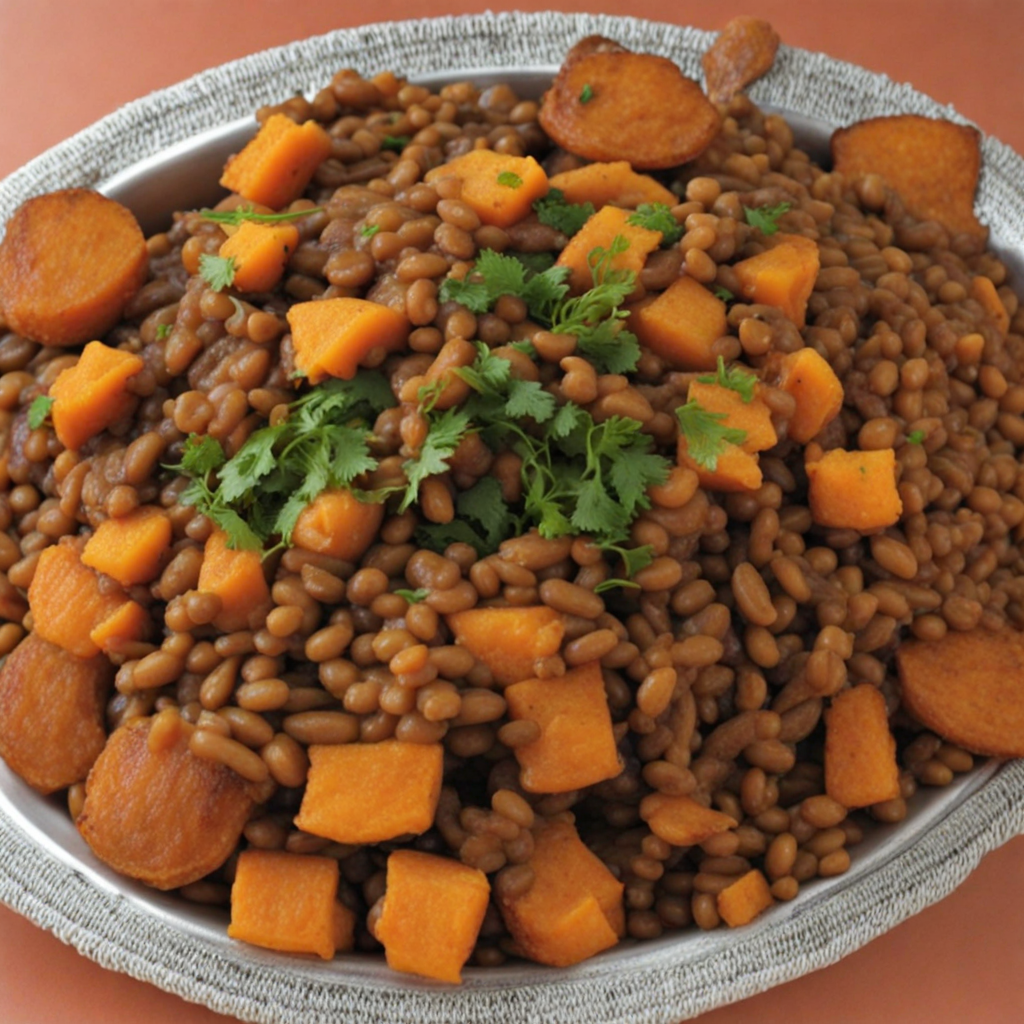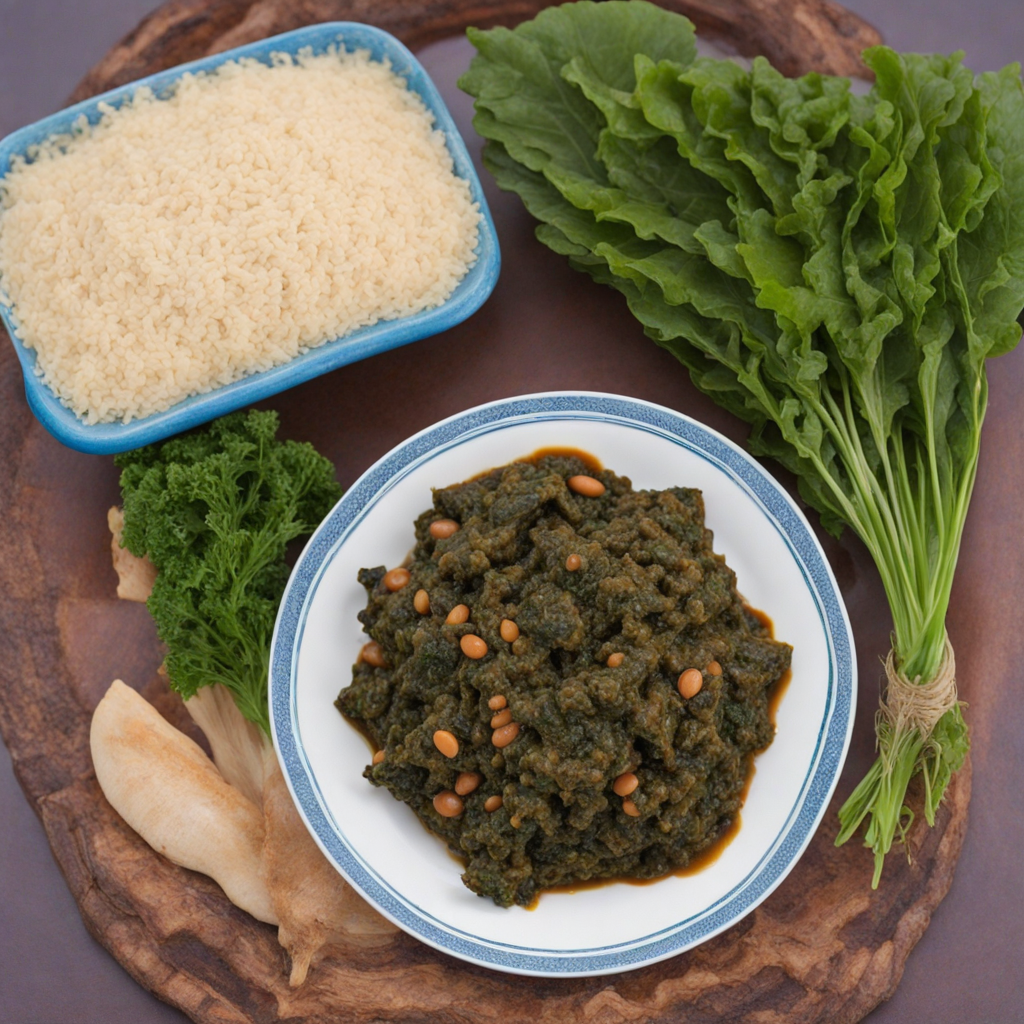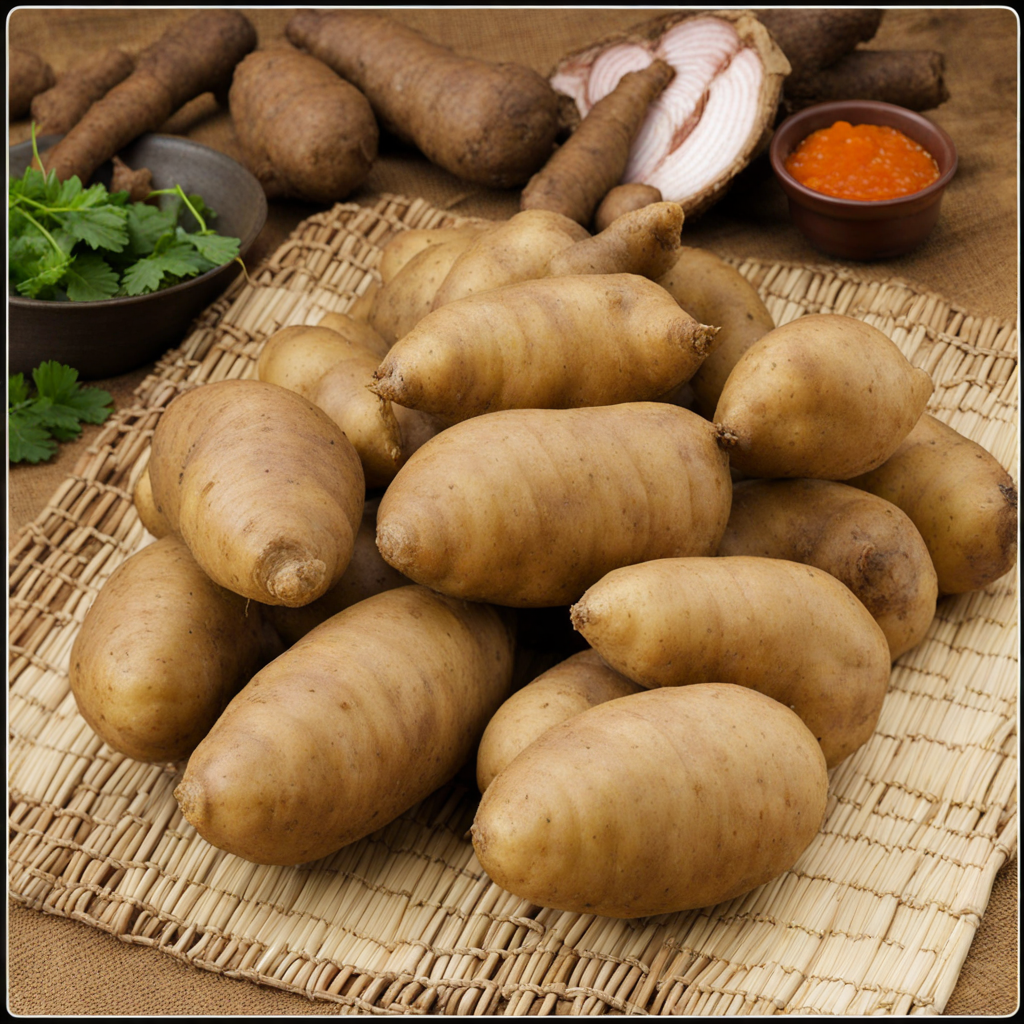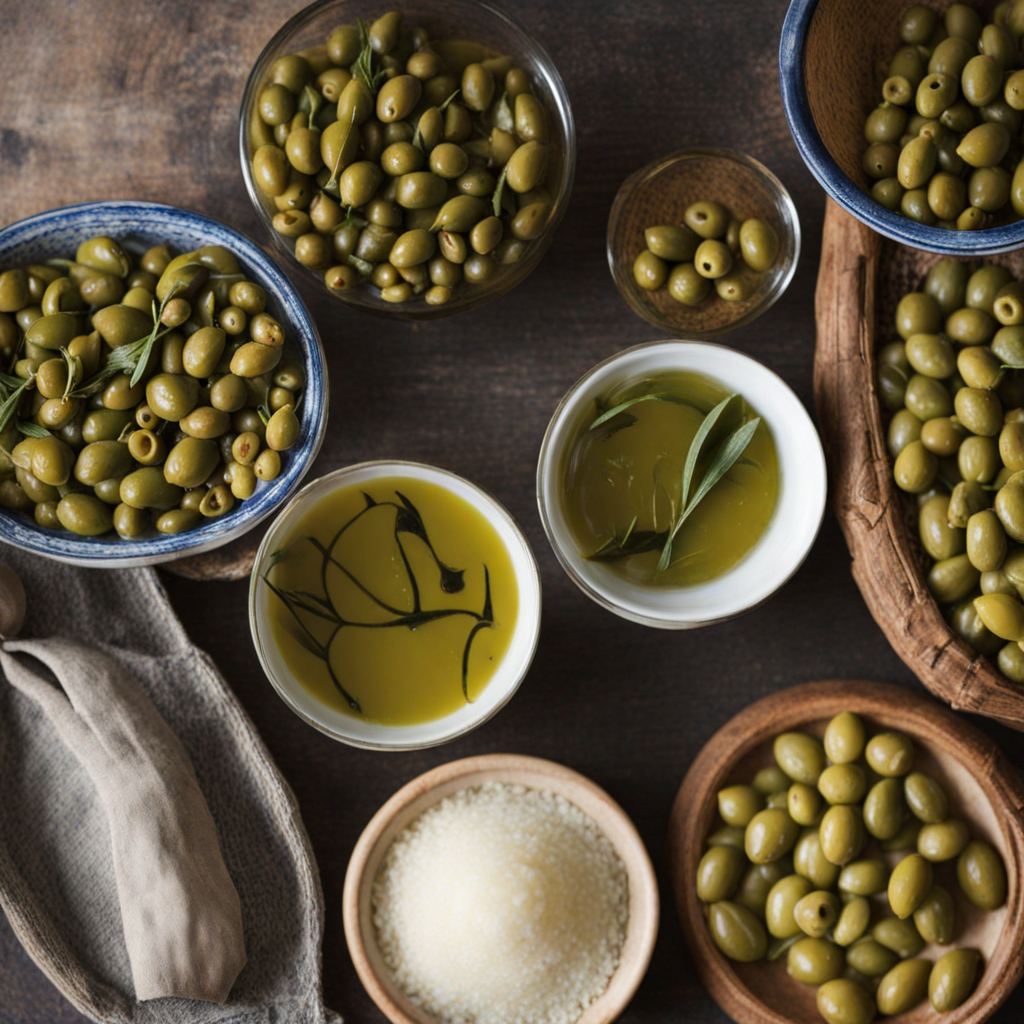Ibiharage
Ibiharage is a delightful traditional Rwandan dish made primarily from fresh green beans, which are cooked to perfection to maintain their vibrant color and crisp texture. The beans are often accompanied by a medley of spices and sometimes mixed with groundnuts (peanuts), which adds a rich, nutty flavor to the dish. The cooking process usually involves sautéing the beans with onions, tomatoes, and a blend of local spices that enhance the natural flavor of the beans while imparting a warm, aromatic quality to the dish. The simplicity of the ingredients allows the freshness of the green beans to shine through, making it a wholesome and nutritious option that is both satisfying and light. In Rwanda, Ibiharage is often served as a side dish alongside staple foods like Ugali (a maize porridge) or Matoke (steamed plantains), creating a colorful and fulfilling meal. The combination of textures—from the crunchy beans to the creamy groundnuts—creates a delightful eating experience. Additionally, the dish is usually garnished with fresh herbs, such as cilantro or parsley, which not only add a pop of color but also enhance the overall flavor profile. The dish is a staple in many households and is often prepared for special occasions, showcasing the importance of community and shared meals in Rwandan culture. The appeal of Ibiharage lies not only in its delicious taste but also in its health benefits. Green beans are packed with vitamins, minerals, and dietary fiber, making the dish a nourishing choice for anyone looking to explore new culinary landscapes. For those who enjoy exploring plant-based dishes, Ibiharage offers a unique taste of Rwandan cuisine that is both satisfying and easy to prepare. Whether enjoyed at a local eatery in Rwanda or made at home, this dish is sure to be a memorable addition to any food lover's repertoire.
How It Became This Dish
The History and Cultural Significance of Ibiharage in Rwanda #### Origins of Ibiharage Ibiharage, or Rwandan beans, is a staple food deeply embedded in the cultural fabric of Rwanda. The name “ibiharage” derives from the Kinyarwanda language, which is native to the Rwandan people. The beans’ origins can be traced back to ancient agricultural practices in the region, where indigenous communities cultivated various legumes and cereals. Beans have been a significant part of the Rwandan diet for centuries, providing essential nutrients and sustaining families across generations. The introduction of beans to Rwanda is believed to have occurred around the 15th century, coinciding with the migration of Bantu-speaking peoples from West and Central Africa. They brought along their agricultural knowledge, which included the cultivation of beans, among other crops. The adaptation of beans to Rwanda’s fertile volcanic soil and temperate climate led to their proliferation. As years passed, numerous varieties of beans were developed, with ibiharage emerging as a favored choice due to its remarkable versatility and nutritional value. #### Nutritional Value and Utilization Ibiharage is rich in protein, fiber, and essential minerals, making it a vital component of the Rwandan diet, particularly in rural areas where access to diverse food sources may be limited. Beans serve as an excellent source of sustenance, especially in a country where agriculture dominates both the economy and daily life. They are often paired with staple foods such as ugali (a maize porridge) or isombe (cassava leaves), creating a balanced meal that sustains both energy and health. In Rwandan households, ibiharage is prepared in various ways. It can be boiled and served as a side dish, mashed into a paste, or even incorporated into stews. Traditional recipes have been passed down through generations, each family adding its unique touch based on local ingredients and personal preferences. The adaptability of ibiharage allows it to be enjoyed in both everyday meals and during special occasions, reflecting its significance in Rwandan culture. #### Cultural Significance In Rwandan culture, food is not merely about sustenance; it embodies social cohesion, identity, and tradition. Ibiharage, in particular, holds a special place in Rwandan society. The communal preparation and consumption of meals featuring ibiharage often signify togetherness and kinship. During family gatherings, weddings, and community celebrations, beans are a common dish, symbolizing prosperity and abundance. Moreover, ibiharage is often associated with traditional Rwandan ceremonies. For instance, during the Umuganura festival—an annual celebration of the harvest—communities come together to give thanks for a bountiful year. Ibiharage is typically included in the offerings, reflecting gratitude for the earth's generosity and the importance of agriculture in sustaining lives. The significance of ibiharage extends beyond mere nutrition; it has become a symbol of resilience and recovery for the Rwandan people. After the devastating genocide in 1994, which profoundly affected the nation’s fabric, food played a crucial role in the healing process. Community gardens were established, and the cultivation of crops like ibiharage became a means of fostering unity and rebuilding lives. By working together in fields, individuals could reconnect, share stories, and collectively heal from the trauma of the past. #### Development Over Time The development of ibiharage in Rwanda has been influenced by various factors, including agricultural practices, government policies, and globalization. In recent decades, the Rwandan government has recognized the importance of food security and nutrition, leading to initiatives aimed at promoting the cultivation of nutrient-rich crops like ibiharage. Programs have been implemented to educate farmers on sustainable agricultural practices and to encourage the use of improved seed varieties, which has led to increased yields and better quality beans. Additionally, the rise of the cooperative movement in Rwanda has played a pivotal role in the promotion of ibiharage cultivation. Farmers have formed cooperatives to pool resources, share knowledge, and access markets. This collective effort has empowered rural communities and improved livelihoods, allowing farmers to thrive economically while preserving traditional agricultural practices. The influence of globalization has also impacted the consumption and perception of ibiharage. As Rwanda has opened its borders to international markets, there has been a growing interest in traditional foods, including ibiharage, among both locals and tourists. Restaurants and cafes have begun to feature traditional Rwandan cuisine, showcasing ibiharage in various innovative dishes. This exposure has helped to elevate the status of Rwandan cuisine and has encouraged younger generations to appreciate their culinary heritage. However, the challenge of maintaining traditional practices in the face of modernization remains. As urbanization increases and lifestyles change, there is a risk that traditional dishes like ibiharage may lose their prominence in daily diets. Efforts to educate the youth about the cultural significance of traditional foods are crucial in ensuring that the legacy of ibiharage continues. #### Conclusion Ibiharage is more than just a food item in Rwanda; it is a symbol of identity, resilience, and cultural heritage. Its journey from ancient agricultural practices to a modern staple reflects the evolution of Rwandan society. The nutritional benefits it provides, combined with its cultural significance, make ibiharage an integral part of Rwandan life. As Rwanda continues to develop and modernize, the challenge lies in balancing the preservation of traditional foods with contemporary influences. The enduring legacy of ibiharage serves as a reminder of the importance of food in fostering community and identity. By celebrating and embracing this staple, Rwandans can ensure that ibiharage remains a cherished part of their culinary landscape for generations to come.
You may like
Discover local flavors from Rwanda


